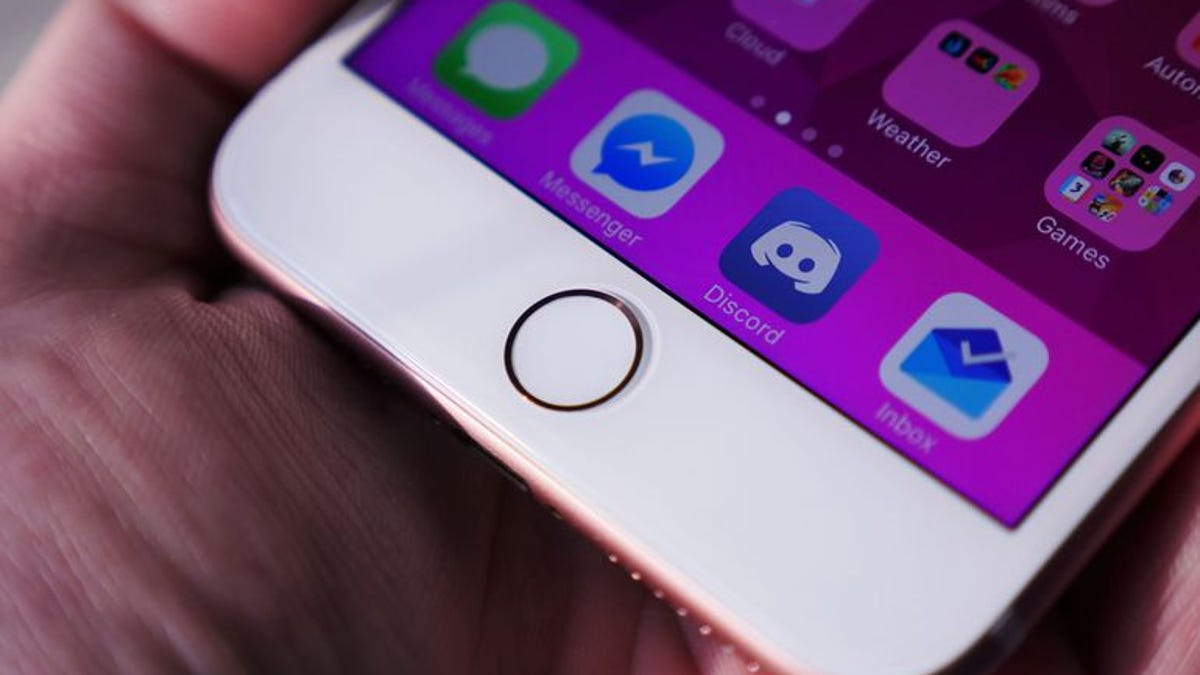Apple granted patent for fingerprint-reading touchscreen
The new security feature could replace the iPhone's venerable round home button.

Bye-bye, home button?
The iPhone's home button may not be long for this world.
Apple has been granted a patent for an "interactive display panel with IR diodes" -- a method that would let users activate a device through a virtual home button placed within the touchscreen. The technology, described in a filing made public Tuesday by the US Patent and Trade Office, could replace the physical home button that's traditionally occupied the space below the iPhone's screen. The patent was first spotted by Apple-tracking site AppleInsider.
Ever since Apple co-founder Steve Jobs introduced the iPhone in 2007, the round home button has been a focal point for navigating the gadget. But rumors of its demise began to swirl in 2013, when Apple introduced Touch ID, a fingerprint security sensor that allowed users of its iPhone 5S to bypass typing in a password. The Touch ID sensor is built into the home button today.
That speculation only increased in 2015, when Apple filed a patent application to move the fingerprint sensor beneath the glass of the touchscreen, eliminating the need for a home button.
As Apple marks the 10th anniversary of the original iPhone, the rumor mill is being fed by reports about big hardware changes expected on the next-generation phone many are calling the iPhone 8. The elimination of a physical home button is one of the rumored changes, as is a glass and steel body with a curved edge display; wireless charging; and even using an iris scanner as one way to unlock the device.
Apple didn't immediately respond to a request for comment.
Does the Mac still matter? Apple execs tell why the MacBook Pro was over four years in the making, and why we should care.
Batteries Not Included: The CNET team shares experiences that remind us why tech stuff is cool.

